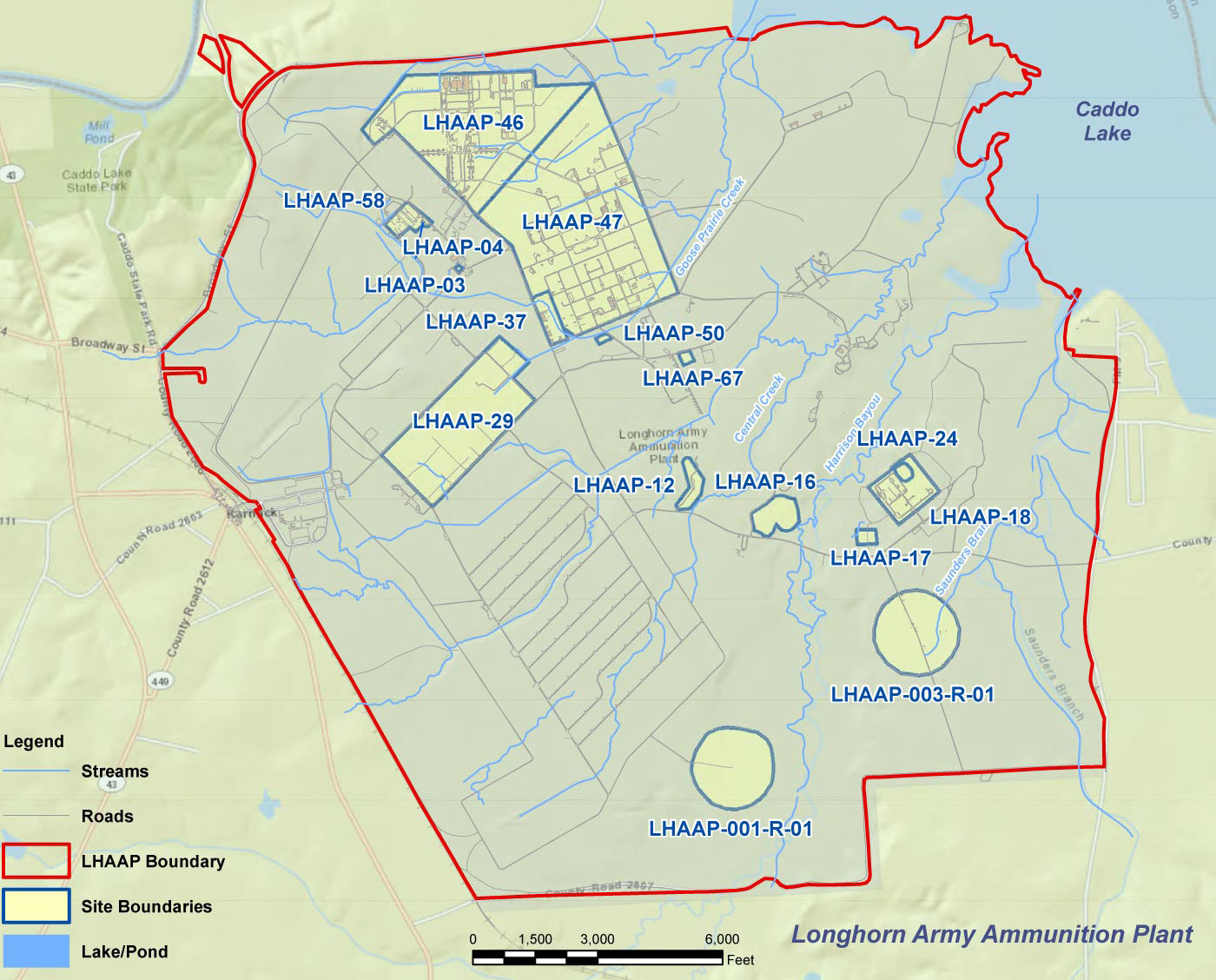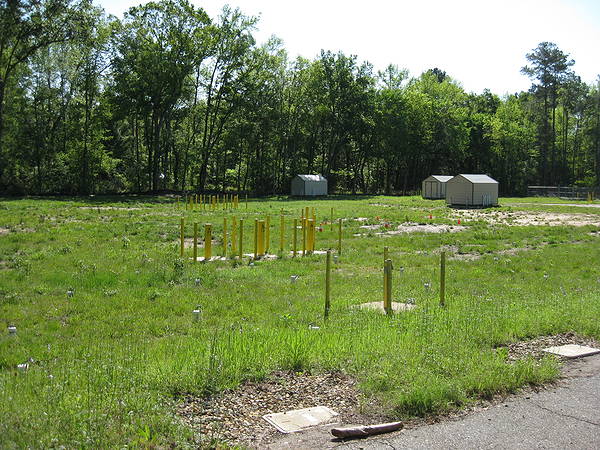Longhorn Army Ammunition Plant
Environmental Restoration Program
LHAAP-35B (37)
Site Description/History
The LHAAP-35B (37) Site, also known as the former Chemical Laboratory, encompasses approximately 12.2 acres and is located in the north-central portion of LHAAP near the southwest corner of LHAAP-47 and in the northeast quadrant of the intersection of Avenue P and 51th Street. The site topography is relatively flat. The surface features at LHAAP-35B (37) include a mixture of asphalt-paved roads and parking areas, several administration buildings, the former Chemical Laboratory (Building 29-A), and a mixture of wooded and grassy vegetation-covered areas. The surface drainage flows into Goose Prairie Creek. The creek runs perpendicular to the western border of the site and then turns south through the east-central portion of the site and eventually flows into Caddo Lake.
The Chemical Laboratory was built during the construction of Plant 3 (1953-1955) and was originally used to support the production activities at LHAAP. These support activities included research and testing of materials used in the production processes and quality assurance testing. Also, one waste rack sump was located at the site. In 1998, the site was used as a staging area in support of investigation activities.
Remedial Activities
Field investigations conducted between 1998 and 2007 identified groundwater contamination ( VOCs) at LHAAP-35B (37) site and determined its nature and extent. Investigation results indicated that there was no significant contamination in soils. The investigation data and the subsequent human health risk assessment indicated that the soil at the LHAAP-35B (37) site does not pose a risk to the environment or to human health under an industrial exposure scenario for a future maintenance worker. However, groundwater present within the upper shallow zone posed an unacceptable cancer risk and non-cancer hazard to a future maintenance worker from hypothetical groundwater consumption. There is no groundwater contamination in the lower shallow groundwater zone and the intermediate zone. The Baseline Ecological Risk Assessment ( BERA) concluded that no unacceptable risk was present to the ecological receptors from the site soil and groundwater.
A field demonstration pilot study of the bio-plug technology was initiated at the LHAAP 35B (37) site in September 2012. The pilot study is performed by an independent contractor under contract with the United States Army Aberdeen Test Center. The bio-plug technology is a method of augmenting and enhancing in-situ biological degradation of chlorinated organic contaminants. The technology involves subsurface installation of microbiological reactors (bio-plugs) that generate and disperse contaminant-specific microorganisms. The purpose of the pilot study is to determine the feasibility of the bio-plug technology to accelerate the biological degradation of chlorinated organic contaminants in the groundwater at the site. The remedy for this site was put in place in 2013 and included groundwater use restriction Land Use Controls ( LUCs) and monitored natural attenuation ( MNA). The MNA remedy will begin after the completion of the pilot study.
Contaminants of Concern
1,1- DCE, TCE, and PCE in Groundwater
Current Phase
In the Remedial Action Operation phase including MNA (sampling and reporting), well maintenance, LUC documentation, reporting, and Five-Year Reviews.
Future Phase
Site Closeout


